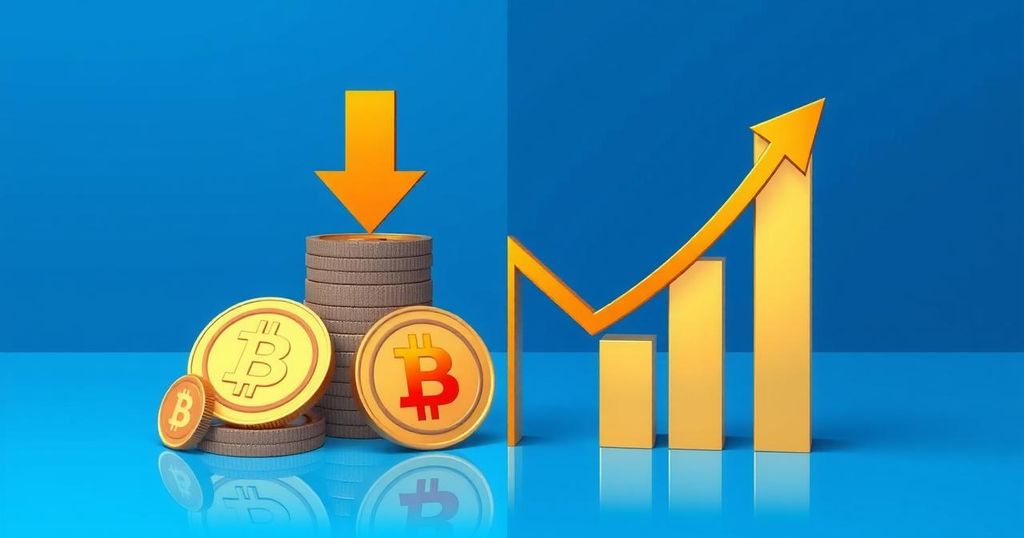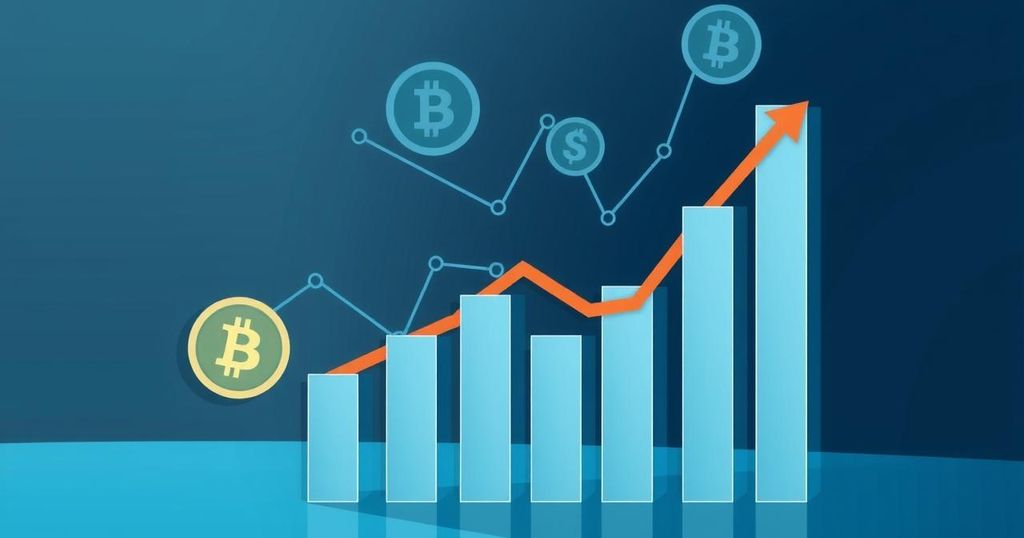Bitcoin Price Consolidation at $63.7K: Market Dynamics and Investor Sentiment
Bitcoin is in a significant consolidation phase post-2024 halving, with short-term holders facing unrealized losses, although these losses are less severe compared to earlier market downturns. The cost bases for these holders indicate a trend of capital outflow, yet optimism persists among new investors as Bitcoin remains above the critical 200-day moving average. Analyst insights suggest the potential for a market reversal supported by sustained interest in Bitcoin despite current challenges.
Bitcoin is currently experiencing a prolonged consolidation phase following the 2024 halving. During this period, short-term holders of Bitcoin, specifically those who have held their investments for less than 155 days, are reporting significant unrealized losses. Notably, the current losses are less severe than those encountered during the market downturns of March 2020 and mid-2021, suggesting that while the market sentiment has turned negative, it may not be as dire as prior instances. The cost base for short-term holders has descended; those who have maintained their investments for just one week to one month are averaging lower expenditure compared to those who have held for one to three months. This trend signals potential capital outflows. Nevertheless, optimism persists among new investors, especially as Bitcoin remains above the crucial 200-day moving average, currently situated at $63,900. The consolidation phase mirrors conditions preceding previous market surges, demonstrating both challenges and opportunities within the ecosystem. Analyst insights emphasize that the ongoing downtrend in spot prices is outpacing capital withdrawal intensity, further indicating that even with unrealized losses, the overall sentiment remains cautiously optimistic. Alternatively, the consolidation may soon yield to a positive shift in market momentum, as suggested by the sustainable interest from new investors. Moreover, analysis from Glassnode highlights the relationship between the cost basis of new market participants and that of the overall market, indicating that the bearish sentiment could be weakening relative to the underlying bullish enthusiasm. It is essential to note that liquidity and behavioral trends can shift unexpectedly, influencing market dynamics significantly. The prevailing outlook suggests a robust foundation for Bitcoin, attributed to its increasing recognition against major economic and technological shifts, further solidifying its strategic value.
The cryptocurrency market is well-known for its volatility and rapid changes, especially surrounding significant events such as halving, which occurs approximately every four years for Bitcoin. The most recent halving took place in 2024, leading to a new dynamic in Bitcoin’s market behavior. Following halvings, Bitcoin typically enters phases of consolidation or volatile trading as investors recalibrate their positions and the supply-demand equilibrium shifts significantly. In this scenario, a significant portion of short-term holders appears to be underwater on their investments, a situation exacerbated by deteriorating market conditions further emphasizing the importance of observing trends among both short-term and long-term Bitcoin holders.
In conclusion, Bitcoin has found itself in a period of consolidation characterized by investment fluctuations among short-term holders. While the immediate outlook appears challenging with many investors holding unrealized losses, the overall sentiment among new market participants remains optimistic, suggesting potential for a market reversal. The retention of price levels above the critical moving average fosters a backdrop of cautious yet hopeful anticipation as the market adjusts to changing economic landscapes. Additionally, the evolution of Bitcoin’s perceived strategic value contributes to a more robust market sentiment, despite inherent volatility.
Original Source: www.bitcoinsensus.com








Post Comment